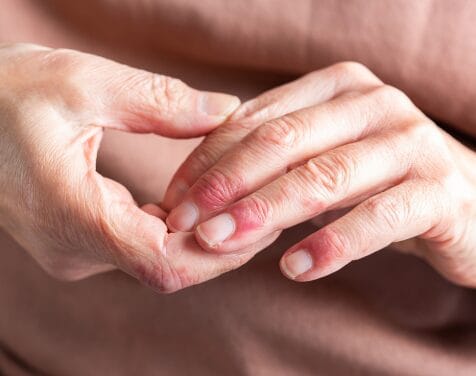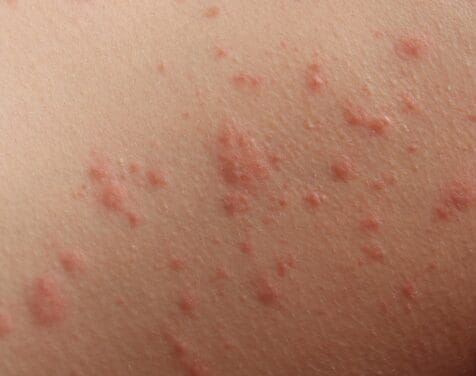Dealing with contact dermatitis is not an easy job, especially when it prevails for longer. A rash can be very irritating when your skin comes closer to or in contact with an allergen. With it’s rising popularity and prevalence, gel nails have also been blamed for contact dermatitis. Gel nails contain some chemicals that affect the skin underneath the nails and fingertips. This article will guide you the way out; how you can avoid contact dermatitis from gel nails.

What is contact dermatitis?
When your skin comes into contact with an allergen or irritant, you develop a rash, which is an indication of your skin’s reaction to that allergen. Dermatitis is a medical term that refers to skin irritation or inflammation, and contact dermatitis is skin irritation, due to contact with an allergic substance. The rash makes you feel itchiness and discomfort on and around that area of your skin. There are several triggers to your contact dermatitis, and to avoid it from coming back, it’s best to avoid those triggers.
Contact dermatitis from gel nails
There are certain chemicals in gel nail polish that can cause an allergic skin reaction under the nails and on fingertips when your skin comes into contact with it. Methacrylates, the main compound in the gel, is a chemical that people develop allergies to. Irritation can not only be experienced on the skin around your nails, but also other areas including your mouth, chin and eyelids, that are touched normally.
Symptoms of gel nail polish allergy
Although the symptoms of gel nail polish vary based on the individual’s sensitivity, common symptoms include:
- • redness and inflammation around nails
- • swelling
- • itching
- • blistering
- • nails tend to be detached from cuticles
- • nails may change color
Treatment for contact dermatitis due to gel nails
Avoiding gel nail polishes
Stop the usage of gel nail polishes and other nail products that consist of allergens specific to your irritation. Instead, go for alternatives such as dip powder manicures, water-based polishes, breathable nail polish, and nail wraps. If you do not avoid the trigger, there would be no definite cure to your issue. The treatments and medications would not fully work.Topical steroid creams
Ointments or steroid creams reduce inflammation, redness and itching. They manage the symptoms due to methacrylates, such as redness, swelling and itching. They need to be used as directed by the physician.Oral antihistamines
Antihistamines counteract the effect of histamines, a chemical released by the skin due to allergy. They are used to cure more widespread symptoms of skin allergy, than common reactions. Particularly effective at reducing itching and swelling, they can also be used along in other treatments such as topical corticosteroids.Allergy shots
Although more useful for respiratory allergies, allergy shots may also be recommended for allergic contact dermatitis. It majorly includes small amounts of an allergen, injected into the body for a specific amount of time, to end up desensitizing that individual from that allergy.Prevention strategies for gel nail polish allergy
To minimize contact dermatitis due to gel nail polish, here are some key steps you can take:
- • Use gel nail polishes that are labelled hypoallergenic, which exclude allergic ingredients and chemicals like methacrylates, formaldehyde, toluene and dibutyl phthalate (DBP).
- • Check for any allergic reactions before using the gel, by applying it to a small area of your skin such as your elbow and waiting for 48 hours.
- • Look for allergic reactions beforehand, such as itching, redness, swelling or blisters to prevent more severe development of them.

Frequently Asked Questions
What is contact dermatitis and how is it related to gel nails?
Contact dermatitis is a skin irritation or rash caused by exposure to allergens or irritants. In the case of gel nails, certain chemicals, especially methacrylates, can trigger allergic reactions when they come into contact with your skin.
Which chemicals in gel nail polish cause allergic reactions?
Methacrylates are the most common culprits. Other harmful ingredients include formaldehyde, toluene, and dibutyl phthalate (DBP), which are often found in traditional gel polishes.
What are the symptoms of a gel nail allergy?
Symptoms include redness, swelling, itching, blistering, nail discoloration, and even detachment of the nail from the cuticle. Other areas like the face (mouth, chin, eyelids) may also be affected if touched.
Can contact dermatitis spread to other parts of the body?
Yes, if your fingers touch areas like your face, the allergen can transfer and cause itching or rash on the eyelids, chin, or mouth.
How can I treat contact dermatitis caused by gel nails?
- • Discontinue gel nail use immediately
- • Apply topical steroid creams as prescribed
- • Take oral antihistamines for widespread itching or swelling
- • In some cases, consider allergy shots
What are safer alternatives to gel nails?
- • Dip powder manicures
- • Water-based polishes
- • Breathable nail polish
- • Nail wraps
These are generally gentler and less allergenic.
Can I continue using gel nails if I’ve had a mild reaction before?
No. Continued exposure can worsen symptoms and make the allergy more severe or long-lasting. It’s best to avoid the product entirely.
When should I see a doctor for gel nail dermatitis?
If symptoms persist, worsen, or spread beyond your fingertips, or if home remedies don’t help, it’s important to see a dermatologist or allergy specialist.





